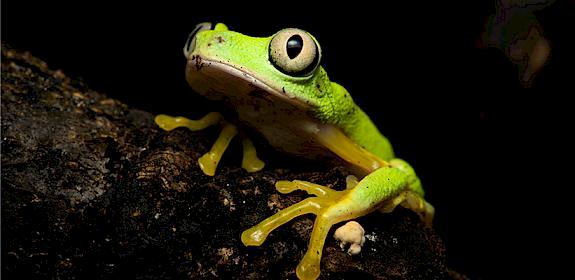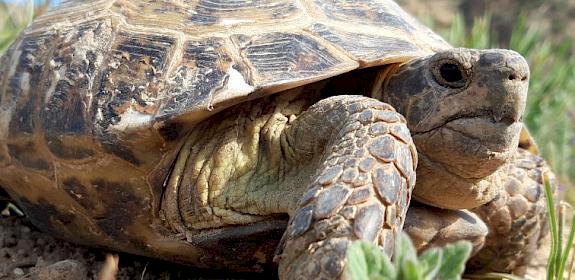Snow leopard summit marks halfway point for saving the guardian of Asia’s high mountain ecosystems
Bishkek, Kyrgyzstan, 31st August–Wildlife crime was recognized as a priority by the 12 range country leaders at the 2nd International Forum on Snow Leopard and Ecosystem Conservation.
The Bishkek Declaration 2017, endorsed by the 12 Snow Leopard range countries, reiterates the commitments first made in 2013, when leaders set an ambitious goal of securing 20 snow leopard landscapes by 2020.
At the halfway point in that timeline, while countries have identified an encouraging 23 priority landscapes, there remains much that needs to be achieved to combat threats posed by climate change, infrastructure development, and natural resource extraction – as well as poaching and trafficking of snow leopards.
At the Science Symposium which preceded the summit, TRAFFIC presented to delegates the results of the 2016 report An Ounce of Prevention: Snow Leopard Crime Revisited, which revealed the alarming scale at which Snow Leopards are illegally killed each year. Expert opinions compiled as part of TRAFFIC’s research estimated that between 221-450 Snow Leopard individuals are killed annually, and that up to 108-221 may enter illegal trade per year.
Given the elusive nature of Snow Leopards, many killings are also opportunistic with illegal derivatives such as skins and bones entering illegal trade as a result. The closure of open markets and increased trade monitoring will help reduce the potential for poachers and traffickers reaping rewards from opportunistic killings, alongside measures to enhance anti-poaching, detection and conviction efforts.
Based on our research, the most effective intervention is likely at the source where human-wildlife conflict and retaliatory killings are the leading cause of Snow Leopard mortality. However, seizures examples persist where parts from multiple snow leopards are involved in a single incident – which we believe indicates organized trafficking.
James Compton, TRAFFIC’s Senior Director for AsiaThe Bishkek Declaration 2017 notes the importance of information management via wildlife crime databases, and the strengthening of enforcement networking in order to combat poaching and illegal wildlife trade. Representatives from the CITES Secretariat and INTERPOL were among inter-governmental agenices represented at the Forum, and emphazised the support from the International Consortium on Combating Wildlife Crime (ICCWC), which also includes the United Nations Office on Drugs and Crime (UNODC), World Bank and World Customs Organisation (WCO).
‘Along with wildlife crime databases, the key issue is intelligence-led law enforcement actions on the ground,’ said Alfredo Phoenix, INTERPOL Environmental Security Co-ordinator for Wildlife. ‘Enhanced capacity of enforcement agencies and effective networking between them nationally and at the regional level is of paramount importance to disrupt wildlife trafficking, to seize contraband and conduct thorough investigations into who is driving the illegal trade.’
In an encouraging move ahead of the summit, Nepal made conservation history by becoming the first country to launch its climate-smart Snow Leopard landscape management plan. The plan leads the way in safeguarding the species and its habitat and sets a benchmark for other Snow Leopard range countries to follow.
Notes:
Financial support for the research and publication of TRAFFIC’s report was provided by the WWF Conservation and Adaptation in Asia’s High Mountain Landscapes and Communities Project, funded by the United States Agency for International Development (USAID).




